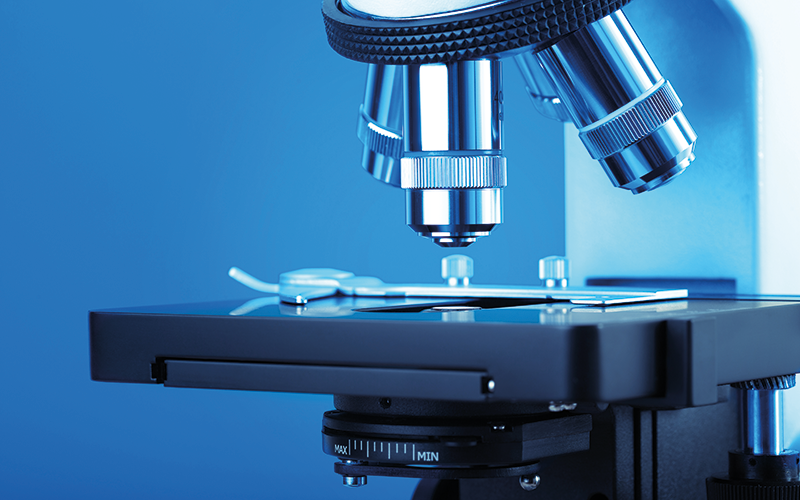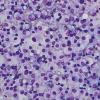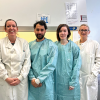Consultant Biomedical Scientist Tracey Stevenson discusses developing a diagnostic cytology service after her previous laboratory was unsuccessful in bidding for cervical screening programme work.

Having worked in cytology for over 36 years, it seems as if we have always lived under the threat of major service change – from the attempts to develop commercially viable automated screening machines, through to mergers following the publication of minimum screening workload numbers for laboratories. However, it was a small papilloma virus that would revolutionise the cervical screening programme.
The decision by NHS England to reconfigure provider laboratories to support the roll-out of human papilloma virus (HPV) primary screening into the NHS Cervical Cancer Screening Programme (CSP) in England by December 2019 triggered a major service reconfiguration and consolidation exercise that required cytology laboratories to tender for the screening work. Our laboratory was unsuccessful in its bid and so, like many other laboratories, had to go through the Transfer of Undertakings (Protection of Employment) TUPE process. Although this was handled with the utmost care and sympathy, it was still a difficult time for us all. There was the option to take redundancy however, a few staff grasped the opportunity to start something new, somewhere new.

A new start
Good laboratory management and support from clinical colleagues ensured the retention of six posts for our department to continue and develop the diagnostic cytology service within the trust and to become an integrated specialist area within cellular pathology. The staff for the new service were chosen following expressions of interest and a round of interviews for these six jobs on offer.
The new service for diagnostic cytopathology and rapid on-site evaluation (ROSE) clinics came with new job descriptions and contracts and a great deal of trepidation, as our workload of 90,000 cervical cytology screening samples transferred to our regional hub and our staff of 24 became six. After the uncertainty of the previous two years it was good to finally arrive at the first day of our new career and hopefully the start of bigger and better things.
A week later, on 23 March 2020, national pandemic lockdown began.
Life in a cytology lab without cervical screening does exist and it is still possible to make it into a career
COVID pandemic
For the staff who remained it was a very steep learning curve. Although all were experienced in cervical screening and diagnostic cytology sample preparation, few had experienced writing reports for diagnostic cytology or in ROSE clinics. Cervical screening for the NHS has a highly structured mandatory training programme, whereas diagnostic cytology has none of this in place. For a staff member to train in reporting, or clinic work, the training has to be delivered in-house and via courses at regional training schools. However, none of these were running during COVID, so a more formal structured in-house training programme had to be created for the staff. We made use of any and all YouTube videos for this due to remote training (thank you Sam Webster).
Although multidisciplinary pathology working is key for smaller hospitals and great for the staff working within them, in order to ensure a competent experienced and expert workforce within both histology and cytology the two disciplines do require a certain level of autonomous working from each other. Laboratory management and clinical staff in cellular pathology work well as a combined unit but it has become apparent that for staff to stay competent in reporting and clinic attendance for ROSE services it is preferable for cytology staff to work primarily in cytology. The notion that quality and expertise can be retained by simply retaining a couple of staff to undertake cytology sample preparation within a histology department has been shown to not be a sustainable or robust option.
COVID also brought with it the need to review all of our practices in cytology, both within the lab and in the clinical settings, to meet the new health and safety requirements. Thankfully, the changes we needed to implement within the lab were minimal as we already had good working practices within our Category 2 preparation room. Clinical work required a few further changes, dependent on whether they were deemed aerosol-generating procedures (AGPs) or not. Clinical staff required fit testing for FFP3 masks and required this throughout the pandemic, as the masks being obtained kept changing, depending on availability. In the clinics, which used surgical masks, there were issues with fogging of the goggles and microscope lenses. Various antifogging measures needed to be implemented, including a visit to the local motorbike shop to purchase an anti-fog spray, which is still in use today. Training in donning and doffing the extra PPE was also given, with much handwashing and gelling in between each stage of the procedure.
Equipment maintenance was postponed due to companies either reluctant to send out engineers or in many cases the engineers being furloughed and not available for work. This meant extra risk assessments to ensure safe working and our own safety checks on our own equipment. Good previous preventive maintenance on all our equipment ensured all continued to work throughout the pandemic. COVID, the Suez canal blockage and Brexit meant stock also became an issue for us – particularly plastics. We had to come up with different ways of preparing samples while still providing good, stained preparations without the use of disposable fine-tipped pipettes. Pleading and bartering with various neighbouring laboratories helped.
The new normal?
Even though our cervical screening workload had transferred to our local hub and we were 90,000 samples lighter, we still had the same work to carry out with regard to quality assurance, health and safety, training and competency.
One of the staff trained to be a mental health champion and then created a noticeboard for us with various monthly themes
We also needed to finish the remaining cervical work within the lab and maintain the failsafe for the NHS screening programme for our patients still in follow-up. For UKAS, all our diagnostic cytology and clinic processes had to be reviewed to ensure all had been verified for use. For the IBMS, our approval to train still had to be maintained for support staff, registration staff and post-registration staff and all of our documents had to be updated to reflect the new service.
To add to the challenges, we were also implementing a new trust-wide electronic patient record (EPR) system with new modules for the laboratory, which, as is usually the case, had no module for cytology, requiring the histology module to be adapted. However, this gave us the opportunity to create biomedical scientist reporting sections within patient reports for cytology staff to write their reports and to use flags to highlight fine needle aspirates taken with biomedical scientists in attendance at clinic – all useful for running reports to provide the required data for our audits.
A consequence of the COVID safety precautions meant that staff became very isolated from their colleagues, both in work and socially outside work. Ensuring mental health was maintained was really important as staff had difficulty in knowing what was expected of them in the new service. COVID curtailed training in clinics, as no extra staff were allowed in these areas. Initially all training and daily communication became virtual – even within the same room. The lack of seeing facial expressions was more difficult than anyone could believe. The use of masks making staff deaf is a very strange phenomenon! Organising one-to-ones with staff to keep them connected with each other and to keep them motivated became an important topic of conversation.
Nothing to do
Anyone who thinks their job stressful because they’re overworked should try filling their day when they don’t have enough work. We were used to working flat out to meet our turnaround times but, with the reduction in cancer work during the pandemic, the diagnostic cytology workload consequently fell. It was difficult to stay positive and we had to come up with different ways to keep focused. A weekly lunchtime walk around the outside of the hospital to aid mental health and social interaction was instigated. One of the staff trained to be a mental health champion and then created a noticeboard for us with various monthly themes, such as a spring photo competition to enter, healthy eating recipes to try out on each other (obviously, still mainly cake) and favourite walks.
Loss of cytology services
The loss of the service was a traumatic time for all concerned – for those who left and for those who remained.
The formation of cervical cytology screening hubs did not happen overnight and the lack of trained medical pathologists is a well-known issue throughout pathology. Losing the majority of trained, skilled cytologists may not have been the best plan the NHS ever had, but the managers of those labs should shoulder some of this blame.
For us the efforts of a good manager and clinicians who cared about continuing their ROSE services for their patients was enough to secure our diagnostic cytology service that hopefully can be maintained and expanded and with enough trained staff to provide the time to train new graduate staff without the benefit of a cervical cytology background. We aim to ensure their faith in us is not misplaced.
Post-pandemic
Post-COVID our diagnostic cytology sample numbers are increasing, which creates work in the preparation room and for reporting numbers. Clinic training is back on track with all staff now signed off as competent in both head and neck and endocrine (thyroid) clinics and the training in endoscopy for upper GI and EBUS ongoing.
We were used to working flat out, but with the reduction in cancer work during the pandemic, the diagnostic cytology workload consequently fell”
We have participated in the validation of a molecular platform to provide a rapid turnaround time (TAT) for acutely ill lung cancer patients, we have trained in scroll cutting for molecular testing, trials and research and some staff have also undertaken immunohistochemistry (IHC) training. These are all areas that offer new opportunities for cytology staff.
What does the future hold?
To ensure all of our previous cervical cytology training material was not lost due to age-related deterioration, we had already digitised the slide sets to allow our trainee medical staff and STP trainees on rotation to view cervical cytology slides at the laboratory. The interpretive diagnostic cytology external quality assurance (EQA) scheme is already a digital scheme, so we do have some experience in viewing digital images. Now, with the procurement of a digital pathology system, other monolayer type sample preparations can be digitised. As with histology, there is a lot of work to be done to validate cytology before it would be deemed acceptable for reporting.
Further expansion of our biomedical scientist-led clinics has helped to increase our workforce and the recent introduction of the IBMS ROSE specialist portfolio module will allow for a much more structured and standardised approach to clinic training for all staff.
The continuing discussions by the IBMS, BAC and RCPath for further training and education of biomedical science staff via the DEP and ASD portfolios in both cytology and histology will hopefully help laboratories to create a workforce plan for the future. However, the NHS and scientific community need to first accept that consultant biomedical scientists are equivalent to clinical scientists to ensure this succeeds as a career pathway.
Life in a cytology lab without cervical screening does exist and it offers a good career option, but it requires the right staff, supportive clinicians and a management team who can see the possibilities not only to create it but to develop it and keep it moving forward.
Tracey Stevenson is a Consultant Biomedical Scientist in Cellular Pathology – Cytology, at The Royal Devon University Healthcare NHS Foundation Hospital
Image Credit | iStock




